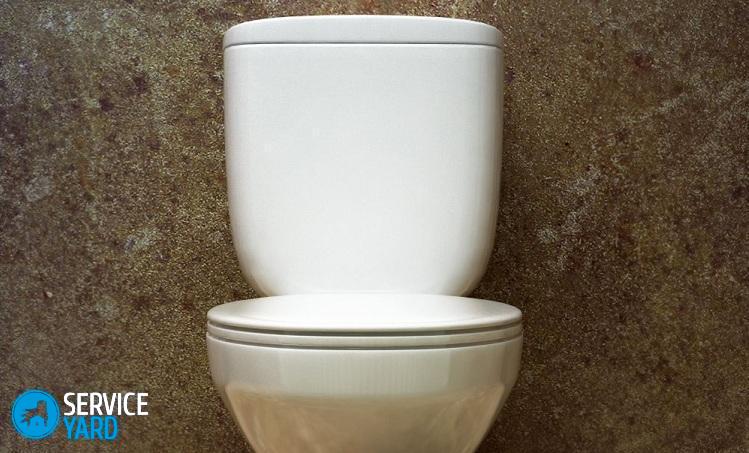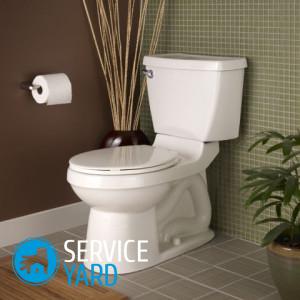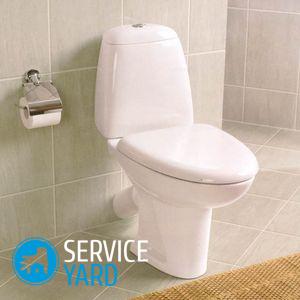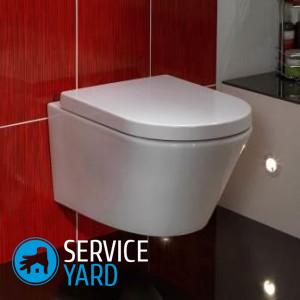Water is constantly flowing in the toilet - what should I do?
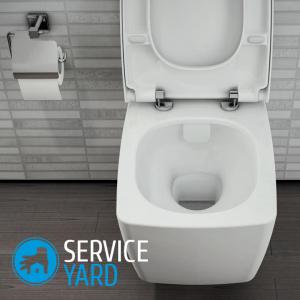
Proper plumbing work is a good mood and budget savings. However, it is not always possible to avoid water leakage in the toilet after flushing. Water flowing unnecessarily from the tank carries an excessive flow of water. If water constantly flows in the toilet - what should I do? You can cope on your own, without resorting to the help of specialists, but for this you need to know the algorithm for determining trouble, as well as ways to eliminate it. We will consider them in this article.
to contents ↑Why is the tank flowing?
Water leakage from the toilet bowl means that the plumbing fixture is malfunctioning. This is evidenced by the following facts:
- A constant noise of water is heard that enters the toilet bowl between flushes.
- Condensation of cold water is collected on the pipes.
- A rusty coating appears.
- The numbers on the cold water meter are significantly higher than usual.
Initially, avoiding such inconvenience can help the proper installation of plumbing equipment.
to contents ↑Important! Failures that happen in the future can be completely repaired independently, if you familiarize yourself with the options for the causes and repair methods.
The principle of operation of the toilet
Why is water running and how to quickly fix a toilet break? Before determining the cause of a toilet barrel malfunction, it is worth recalling the principles of the device:
- Water enters the tank from the water pipe.
- The tank is filled by raising the float up.
- Having reached a certain volume, the liquid shuts off the drain valve and further filling with liquid stops.
- Pressing the button when flushing (pulling the chain or lever), the valve opens, and the water tends to the toilet bowl.
- Then the filling process is repeated, however, when a toilet bowl breaks, it leaks, preventing the liquid from reaching the shutoff valve, or vice versa - it can be poured over the float.
Breakdown reasons
Before proceeding to eliminate the breakdown and find out why water is constantly pouring, it is necessary to understand its possible causes, and there may be several.
Incorrect installation
As a rule, new plumbing products that were not installed correctly begin to flow during the first six months after installation.
You can find out why it is leaking water and eliminate the cause of the problem by disassembling the device yourself and inspecting it for visible flaws or cracks. Also check the function of the shutoff valve and correct.
Disruption of the drain device
After a long time of use, plumbing fittings wear out, reminding themselves of breakdowns. Also, troubles can arise earlier if the installation of plumbing used materials of poor quality tank fittings.
To understand why water constantly flows in the toilet, what to do, you should close the water supply system that is connected to the tank and observe the leak:
- If the water leaves when the water supply is off, then the problem is the drain valve. This may occur due to build-up of salt deposits from water, blockages, or normal wear and tear. You can fix such a breakdown by cleaning the tank with removal from accidental debris or plaque.
- If the water remains in the tank and does not drain into the bowl, the reason lies in the incorrectly adjusted float or in the blockage of the automatic water system.In this case, it is worth trying to adjust the pressure of the water supply.
Find and fix a breakdown
Leakage of the drain device can occur in different ways, so you must initially determine how the water flows:
- Leaking overflow.
- It flows between the bowl and the tank.
- Leak occurs before the overflow begins.
- Water flows through the overflow.
- Together with the drain.
The toilet bowl overflows, and excess water overflows overflow - this problem can occur for several reasons:
- Mechanical damage to the valve body - such a breakdown can occur with a plastic pound. Deformation or weak pressing of a laying.
- Deterioration of the stud that holds the lever of the automatic drainage device.
- Float lever offset.
Important! Before proceeding with the repair, it is necessary to prepare the following: wire cutters, gloves, pliers and new elements to replace the old ones. Also do not forget to shut off the water supply.
Lever offset
Lever displacement is the most common cause of leakage. To fix the problem, it is enough to return the lever to its original position - strictly horizontally, below the pipe connection.
To eliminate other leaks through the overflow, proceed as follows:
- Remove the tank cap.
- Try adjusting the float by raising it a few millimeters.
- If the leak stops, then replace the axis of the float or bend it (metal axis).
Important! Slightly turn the float lever for an earlier shutoff of water.
If the flow continues to rise while raising the float, pay attention to the valve. The hairpin in its composition may wear out, so it must be replaced with a new one or copper wire, as an alternative, should be used. In the place where the stud is attached, there should be a tight connection, as well as a complete absence of holes.
Important! If the leak continues with the valve gasket tightly pressed, the mechanism will have to be completely replaced.
Water flows to overflow (video)
If water constantly flows, reaching or not reaching the overflow, then most likely the bolt that tightens the shelf and toilet bowl has rusted or cracked.
Once again, make sure that the water flows to the overflow level, having made a thorough inspection of the fittings, if necessary, replace several bolts or even the entire set of fittings.
Important! It is advisable to give preference to brass fittings. Steel should be discarded, as it is less durable.
The solution involves the analysis of the tank completely. So, proceed as follows:
- Turn off the water supply.
- Empty the reservoir tank.
- Shut off the water supply.
- Remove the bolts that tighten the toilet bowl with a shelf.
- Cut off rusty bolts.
- Tilt the tank back, remove the shelf and place it on a flat surface.
- In addition to the float and valve, disassemble all parts with keys and pliers.
- During reassembly, replace all bolts with new ones.
- Also replace or reanimate with rubber sealant gaskets.
- Lock the tank with the shelf using plastic bolts. Roll the cuff towards the toilet and carefully put it on the shelf.
Important! If necessary, then pull the shelf with a thick copper wire or clamp, since it can also begin to leak over time, losing elasticity.
The pear is loose
If the previous options are excluded, and the water still flows, not reaching the overflow level, then it is worth considering another option. A rubber bulb plays the role of a membrane, opening and closing the drain of water. But rubber products with constant contact with water lose their elasticity and loose fit over time, which is why water leaks.
To fix this problem, replace the bulb. To do this, unscrew it from the threaded rod counterclockwise. When buying a new pear, it is worth paying attention to a softer option, since such a product will last longer.
to contents ↑Important! The problem can be solved temporarily using additional weight by tying it to the lifting rod. Such a body kit will help to more firmly press the rubber bulb to the saddle, than it will help eliminate the leak. You can use any heavy nut as a load.
Stock footage
To understand the issue, the toilet bowl with the button flows - what to do, You can not even a specialist. Initially, it is necessary to exclude all the options for simple breakdowns, and only after that you can proceed with the analysis of the sanitary ware to eliminate more complex problems.



